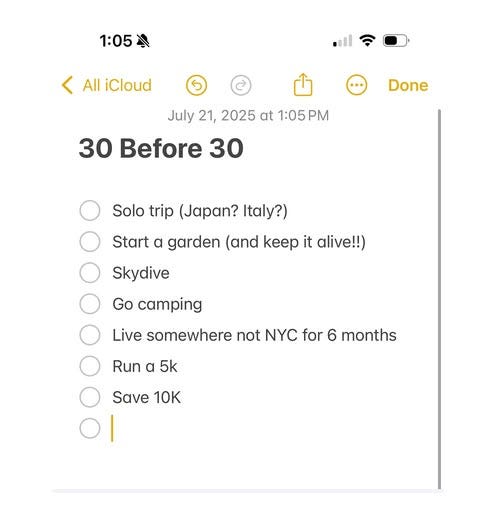What is fawning and why don't we talk about it more?
An adapted excerpt from Chanel Contos’ book, Consent Laid Bare.
The following is an adapted excerpt from Chanel Contos’ book, Consent Laid Bare.
Chanel Contos is the founder of Teach Us Consent, and the author of Consent Laid Bare. BBC World has named her as one of 100 Inspiring and Influential Women Worldwide. Follow her work at @chanelc @teachusconsent
But first, here’s what else people are talking about on Diem:
Am I exaggerating? After 2+ years of being a stay at home mom I am going back to work. During this time my husband has been…
TW: Sexual assault, mental health
You’ve heard of fight, flight and freeze, but have you heard of fawn? Fawning is the fourth and least understood response to stress or trauma. Up until 1995, all research on ‘fight or flight’ responses was done primarily on males, with females only making up 17 per cent of the participants. At the turn of the millennium, researchers started suggesting that this primarily male-based research may have resulted in a unique female stress response being overlooked.
Fawning is a strategy that we unconsciously learn to get ourselves out of trouble or a dangerous situation. It’s acting overly nice in order to survive an ordeal. Fawning has received increasing attention from psychologists and psychiatrists as people try to make sense of incidents of sexual assault and behaviours in the aftermath; for example, in the cases against Hollywood producer Harvey Weinstein, photos of his accusers ‘smiling’ and ‘flirting’ or working with him after the alleged assaults were used to position them as willing partners.
Forensic psychiatrist Carole Lieberman defines fawning as ‘a response where the victim tries to get out of danger by taking on a persona that tries to please the perpetrator’. This could look like fake laughing, fake smiling, letting your rapist drop you home, pretending to lie there asleep next to them, or getting breakfast with them the morning after an assault – before returning to safety. Speaking to survivors, the theme of fawning is often described (without the actual word being used) accompanied with comments about confusion, self- blame and regret for their own actions.
Fawning sounds like:
‘I realised he had led me away from my friends and I’d had so much to drink that I lost my phone, so I was nice to him and did what he wanted until he took me back to the party.’
‘I didn’t know what to do, so I just went along with it so it would be over quicker.’
‘He locked the door behind me and I freaked out, so I gave him head so he didn’t [vaginally] rape me.’
In these moments – realising you are away from friends, that door being locked – your body tells you that you are not safe. That’s when subconscious human instincts determine the safest way out (eventually, and often after accepting an assault may occur first) is to fawn. As sex therapist Kimberly Resnick Anderson says, ‘When a woman is fawning, there is a biological imperative to “make nice” with her assailant by simply letting something happen.’
This trauma response is triggered when fight or flight are not options to achieve safety. It is common in women in heterosexual situations of assault as, speaking in general terms, a man will be stronger and faster, and trying to physically fight or outrun him is not an option. It has also been theorised that females may have evolved to employ this survival tactic more readily, because if they had accompanying offspring they would not be able to fight or take flight while looking after them, leading to a ‘tend- and- befriend’ response (continuing to tend to the child by befriending the abuser).
The tricky aspect of fawning is that even if the person triggering your survival response is not someone who would actually fight you back if you started to physically resist, or someone who would actually chase you if you fled, your brain doesn’t know that. All your body knows in that moment is that you are under threat, and it must assume the worst- case scenario in order to get out alive – even if that means enduring sexual assault.The cruel reality here is that fawning in a time of sexual assault can be a self- fulfilling prophecy. As therapist and author Rev. Sheri Heller said, ‘While fawning set me up for sexual exploitation, it also helped me to survive it.’
Survivors who fawned have identified the action as one that ‘achieves a locus of control’ for the victim. A common theme in testimonies I’ve read or heard is someone saying, ‘I just did [usually a less intrusive sexual act] so that he didn’t [vaginally] rape me’, or recounting their thought process that they ‘went along with the sex so he didn’t hurt me’. However, if someone is not educated in fawning being a valid and common trauma response (as most people aren’t), then often their behaviours can be weaponised against them to justify why it wasn’t assault but instead a lie, or a regret.
According to Curry Psychology Group, fawners, freezers and other victims who do not meet society’s reasonable responses of ‘fight or flight’, are highly unlikely to report their sexual assault because they feel they did not respond in an ‘appropriate’ way. Of the four trauma responses, women who respond by fawning will be the most likely to be blamed for their sexual assaults, or disbelieved if they do divulge: ‘You were flirting with him’; ‘You went to breakfast with him’; ‘You slept over’; ‘You took a photo smiling with him.’ It is very common for victims to reach out to their perpetrator again, to continue to say hello to them in social situations, and to be polite to them at work.
Fawning is not only a valid response to being sexually assaulted, but also effective. If you fawned and have experienced any self-blame as a result (which is normal – but not right), I hope you feel validated. I hope this has helped you relinquish some of that internal victim- blaming that we all have. I hope you’ve been equipped with the language to describe this to loved ones, and to help other loved ones rationalise their actions. Your body did what it had to do to remain safe and you are now safe, so what you did was the exact right thing to do.
—
Adapted from the book CONSENT LAID BARE: Sex, Entitlement, and the Distortion of Desire. Copyright 2023 by Chanel Contos. Reprinted by permission of HarperOne, an imprint of HarperCollins Publishers. Originally published in Australia in 2023 by Pan Macmillan.
You can order Consent Laid Bare on Amazon or your preferred bookseller.
ICYMI
Follow Diem on Instagram and TikTok ➡️
Bug Girls and Vaginal Gummies
Forwarded this email? Subscribe now for the best of Diem every Tuesday and Friday.
Before you go…
Do you have an essay, upcoming book launch or advice you want to share?
We’re exploring turning this newsletter into an “open-sourced” women’s media outlet with contributors from all over submitting stories, recommendations, advice—from all over the world. Email info@askdiem.com if you’re interested and we’ll get back to you as we explore this idea.






